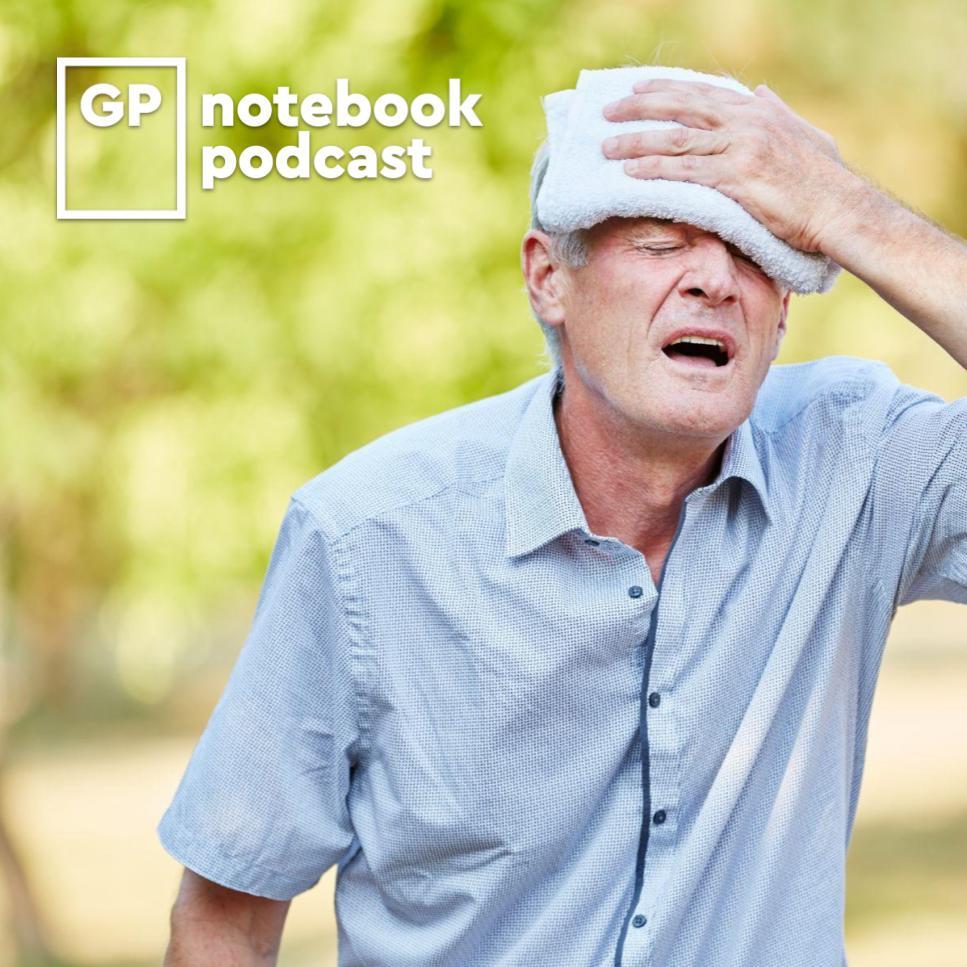Heat-related illnesses are increasing as a result of climate change. In this episode, Dr Roger Henderson looks at various aspects of heat exhaustion and heatstroke, including why they are different conditions and how to recognise them. He also talks about how they are treated and when hospital admission should be considered.
Key references discussed in the episode:
- BMJ Best Practice. Heat stroke in adults. 13 April 2022.
- Walter E and Steel K. Br J Gen Pract. 2018 Mar;68(668):153-154. doi: 10.3399/bjgp18X695273.
- Lipman GS, et al. Wilderness Environ Med. 2019 Dec;30(4S):S33-S46. doi: 10.1016/j.wem.2018.10.004.
- Gauer R and Meyers BK. Am Fam Physician. 2019 Apr 15;99(8):482-489.
Patient information:
Key take-home points:
- Heat exhaustion is the milder form of heat illness, is typically self-limiting and does not usually require hospital treatment. The core temperature is normal or slightly elevated – 37°C to 39°C – compared with over 40°C in heatstroke.
- Heat exhaustion symptoms include cool skin, intense thirst, heavy sweating, feeling faint or dizzy, cramps and tiredness. Mental dysfunction is absent. Symptoms are generally the same in adults and children, although children can also become sleepy and floppy.
- Heat exhaustion may progress to heatstroke, but heatstroke can also occur without heat exhaustion happening beforehand.
- Wetting the skin and clothes with cool water and fanning the skin can aid in dissipating heat and may avert the onset of heatstroke.
- Classic heatstroke is due to passive exposure to severe environmental heat.
- Exertional heatstroke is due to strenuous physical exercise, particularly in younger adults, athletes and people who exert themselves in the heat.
- The pathophysiology of heatstroke is complex. It includes the release of endotoxins and protein denaturation along with thermoregulatory failure. This can contribute to a systemic inflammatory response syndrome leading to multi-organ failure and death.
- Heatstroke symptoms include a history of exposure to severe environmental heat or strenuous physical exercise, central nervous system dysfunction, hyperthermia (>40°C), and dry, hot skin.
- If heatstroke is suspected, call for immediate transport to hospital as it is a medical emergency requiring urgent treatment.
- We should inform any patients at risk of heatstroke or heat exhaustion about the dangers of heat illness and of its symptoms.
- This should include advising people who exercise or exert themselves to avoid high-exertion activities when exposed to heat or hot areas. They should also acclimatise with 1–2 hours per day of heat-exposed exertion for at least 8 days.
Create an account to add page annotations
Add information to this page that would be handy to have on hand during a consultation, such as a web address or phone number. This information will always be displayed when you visit this page
